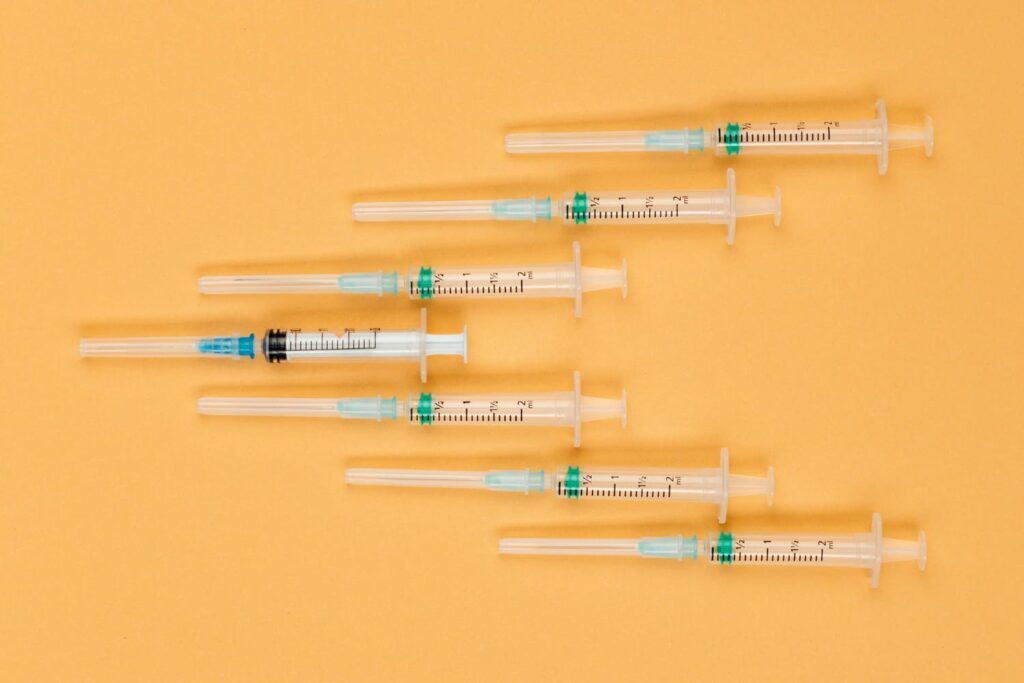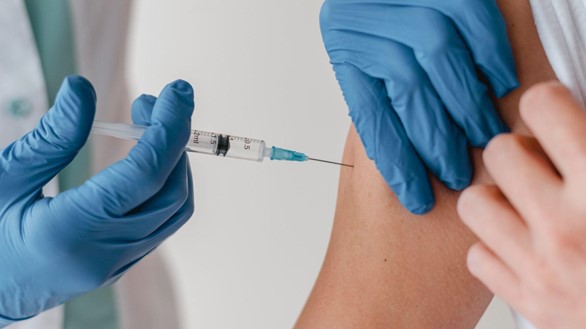Last updated on May 10th, 2025 at 11:39 am

In the medical field, the capacity to precisely and effectively administer injections is essential. Knowing the many injectable kinds, their applications, and the proper injection sites is crucial for delivering top-notch patient care, regardless of experience level or interest level in the medical field. You can choose the most appropriate techniques for various clinical scenarios with more ease if you follow this thorough guide, which will take you through all you need to know about injection kinds.
Understanding Different Types of Injections
1. Subcutaneous Injections (IM)
Intramuscular injections are injected directly into the muscle. Vaccinations, hormone therapy, and some rapidly absorbed medications are among their common use. The muscle provides a large surface area where medication can be rapidly absorbed for several therapies.
2. Subcutaneous (SC) Injections
are administered into the layer of tissue that lies between the muscle and the skin beneath the skin. Typically, these injections are used to give anticoagulants and insulin. Drug absorption occurs more slowly and at a longer rate because to the subcutaneous tissue.
3. Injections given intravenously (IV)
During intravenous injections, medicine is injected right into a vein. This technique is widely utilized for providing anesthetic, replacing fluids, and ensuring a prompt initiation of action in emergency situations.
4. Intradermal (ID) Substances
Just beneath the skin’s surface, intradermal injections are given. Tests for allergies and TB frequently employ this method. It’s perfect for diagnostics because of its sluggish absorption rate.
5. Injections into the joints
With intra-articular injections, medicine is injected right into the joint. Common uses for these include treating inflammatory diseases like arthritis and relieving pain. This technique works very well for targeted treatment because of its exact location.
Types of Insulin Injections
1. Fast-Acting Insulin
It is recommended to take rapid-acting insulin either right before or right after meals. After eating, it helps regulate blood sugar rises. Insulin lispro and insulin aspart are two such. Managing Type 1 and gestational diabetes requires these kinds of care.
2. Insulin with a Short Acting Chain
While it takes longer to take effect than rapid-acting insulin, short-acting insulin has a longer half-life. It is often taken half an hour before eating. One typical example is regular insulin. It is frequently used with long-acting or intermediate-acting insulin.
3. Insulin with an intermediate-acting molecule
Overnight or for almost half a day, intermediate-acting insulin provides the necessary insulin. Insulin that acts quickly or briefly is frequently coupled with it. This is a popular usage for NPH (Neutral Protamine Hagedorn) insulin. Throughout the day, it aids in blood sugar regulation.
4. Prolonged-Acting Insulin
Long-acting insulin lasts longer and supplies a constant amount of insulin day and night. Examples of insulins are glargine and detemir. For people with chronic diabetes, these kinds are crucial for preserving basal insulin levels.

Exploring Types of Injection Sites
1. Intramuscular Points of Injection
The gluteus maximus in the buttocks, the vastus lateralis in the thigh, and the deltoid muscle in the arm are common intramuscular injection sites. Each site has benefits and potential drawbacks, therefore therapy effectiveness depends on the selection made.
2. Sites of Subcutaneous Injections
Subcutaneous injections are frequently administered to the upper arm, thigh, and abdomen. The location selection may have an effect on patient comfort and absorption rate. Rotating sites is necessary to maintain constant absorption rates and prevent harm to the tissue.
3. Areas of Intravenous Injections
The veins in the arms—the basilic, cephalic, and median cubital veins in particular—are common locations for intravenous injections. The patient’s overall experience and the convenience of administration can both be impacted by the vein selection.
4. Injectable Sites Intradermally
For intradermal injections, especially for allergy and tuberculosis tests, the inner forearm is the ideal location. It is simple to keep an eye on reactions in this region. Accurate outcomes depend on using the right technique.
5. Intra-articular Sites of Injection
Intra-articular injection locations include the knees, shoulders, and hips. Depending on the joint being treated and the severity of the problem, a specific site may be chosen. For the greatest therapeutic result, positioning must be precise.
Choosing the Best Injection Site
1. Considerations for Factors
A number of criteria need to be taken into account while selecting the optimal injection location, such as the kind of medication, the patient’s age, and their physical condition. For example, subcutaneous fat and muscular mass can affect the site preference.
2. Patient Security and Comfort
Safety and patient comfort should always come first. It is possible to improve the patient experience by making sure they are comfortable and explaining the operation to them. Infections and other issues can be avoided with careful practice and hygiene.
3. Turning Points for Injection
Rotating injection sites is important, particularly for individuals with diabetes who need injections frequently. This procedure guarantees steady drug absorption and helps avoid lipodystrophy. Effective management of site rotation can be aided by keeping a log.

Consult a Doctor and Medkart will help you Order Medicines Online
Conclusion
For healthcare workers, knowing the different kinds of injections and where to administer them is essential. This information guarantees safe and efficient treatment administration in addition to improving patient care. You can make choices that are best for your patients by being aware of the subtle differences between each injection method and site.
If you want to expand your knowledge, you might want to take advanced classes or look for mentorship from more seasoned professionals. Maintaining proficiency in these fundamental abilities requires constant learning and practice.
FAQs on Types of Injections
1. Which kind of injection is most popular?
Answer : When administering immunizations or drugs that must be absorbed quickly, intramuscular injections are among the most popular.
2. How can I pick the ideal injection location?
Answer : A patient’s age, physical condition, and type of injection all play a role in selecting the best injection site. Constantly keep patient safety and comfort in mind.
3. Why is rotating injection sites important?
Answer : Injecting at different locations minimizes tissue bruising and guarantees uniform drug absorption. For individuals who need injections frequently, it’s very crucial. You can become much more proficient and give your patients better care if you can master these strategies. Always put the safety and comfort of your patients first, be informed, and never stop learning.